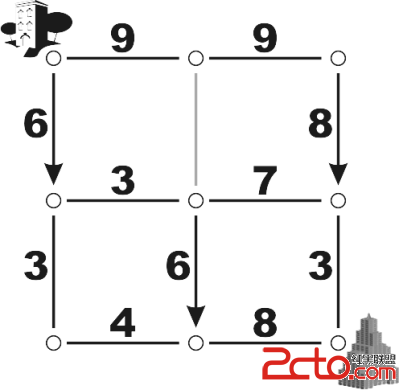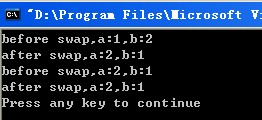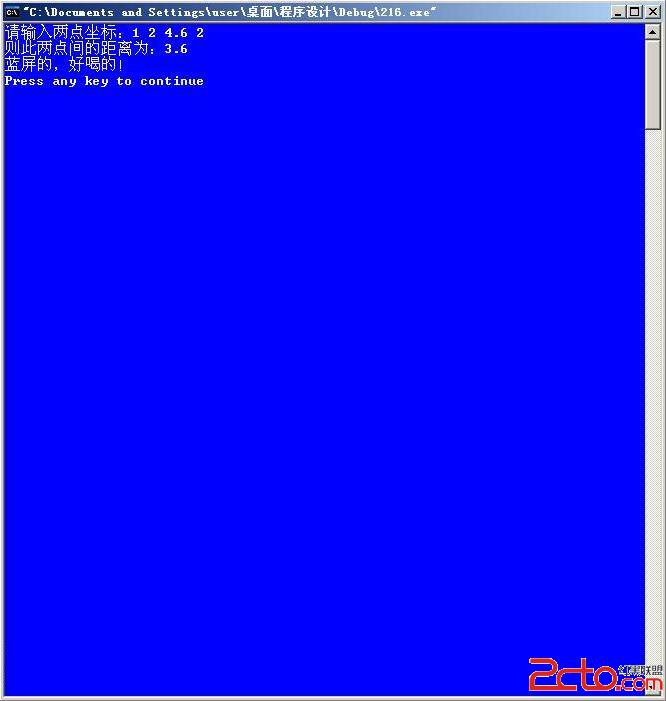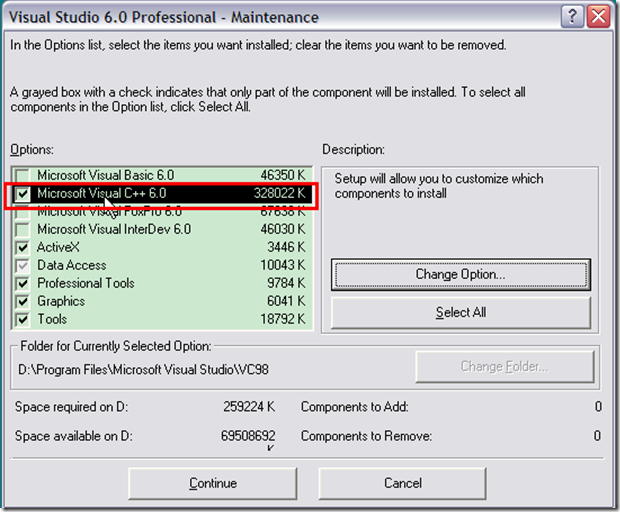关于C++ 虚函数表的一些问题(G++)
#include <cstdio>
#include <iostream>
#include <typeinfo>
using namespace std;
class Point
{
public:
Point()
{
cout<<"Point constructor"<<endl;
}
virtual void func_hs()
{
cout<<"Point::func_hs"<<endl;
printf("the address of this --func_hs:%p\n",&Point::func_hs);
}
virtual void func_zzy()
{
cout<<"Point::func_zzy"<<endl;
printf("the address of this --func_zzy:%p\n",&Point::func_zzy);
}
static void print()
{
//相对地址,在虚表指针之后.0x4 0x8 0xc --------->point to member
printf("&Point::x=%p\n&Point::y=%p\n&Point::z=%p\n",
&Point::x,&Point::y,&Point::z);
}
void printThis()
{
//float *
printf("&this->x=%p\n&this->y=%p\n&this->z=%p\n",
&this->x,&this->y,&this->z);
}
void printVt()
{
printf("the address of object,this:%p\nthe address of vt:%p\n",
this,(void*)*(int*)this);
}
void callVtFuncs(int num=2)
{
cout<<endl<<endl;
typedef void (*Funp)(void);
for(int i=0;i<num;i++)
{
Funp funp=(Funp)*((int*)*(int*)this+i);
printf("%p\n",((int*)*(int*)this+i));
printf("Point::callVtFuncs=>address of this fun:%p\n",funp);
if(i==2||i==3)
{
continue;
}
funp();
}
}
void printVirtualFunAddress()
{
cout<<endl<<endl;
printf("func_hs:%p\nfunc_zzy:%p\nfunc_zzzy:%p\n",
&Point::func_hs,&Point::func_zzy,
&Point::func_zzzy);
printf("%p\n",&Point::func_zzzy);
}
virtual ~Point()
{
// printf("%p\n",&Point::~Point);
cout<<"Point destructor"<<endl;
}
virtual void func_zzzy()
{
cout<<"Point::func_zzzy"<<endl;
printf("the address of this --func_zzzy:%p\n",&Point::func_zzzy);
}
protected:
float x,y,z;
};
int main(int argc, char *argv[])
{
Point point;
Point::print();
point.printThis();
point.printVt();
point.callVtFuncs(5);
point.printVirtualFunAddress();
printf("sizeof func:%u\n",sizeof(&main));
printf("%p\n",&main);
printf("sizeof memfunc:%u\n",sizeof(&Point::printVirtualFunAddress));
printf("%p\n",&Point::printVirtualFunAddress);
printf("%p\n",&Point::func_zzzy);
printf("sizeof virtmemfunc:%u\n",sizeof(&Point::func_zzzy));
cout<<typeid(point).name()<<endl;
return 0;
}
Point类里面包括virtual desctructor共有4个virtual functions.
输出结果如下:
Point constructor
&Point::x=0x4
&Point::y=0x8
&Point::z=0xc
&this->x=0xbffff624
&this->y=0xbffff628
&this->z=0xbffff62c
the address of object,this:0xbffff620
the address of vt:0x8048fc0
0x8048fc0
Point::callVtFuncs=>address of this fun:0x8048a12
Point::func_hs
the address of this --func_hs:0x1
0x8048fc4
Point::callVtFuncs=>address of this fun:0x8048a64
Point::func_zzy
the address of this --func_zzy:0x5
0x8048fc8
Point::callVtFuncs=>address of this fun:0x8048c8e
0x8048fcc
Point::callVtFuncs=>address of this fun:0x8048cda
0x8048fd0
Point::callVtFuncs=>address of this fun:0x8048cf8
Point::func_zzzy
the address of this --func_zzzy:0x11
func_hs:0x1
func_zzy:(nil)
func_zzzy:0x5
0x11
sizeof func:4
0x804880c
sizeof memfunc:8
0x8048bdc
0x11
sizeof virtmemfunc:8
data member那一块比较简单,没有太大的问题。主要是virtual table这块比较复杂 。第一个小问题就是
顺序的问题。实验证明在vtable中虚函数指针的顺序是按照声明时的顺序放置的。不管virtual desctructor
在哪个位置,都会占据两个slot,即有两个virtual desctructor.至于为什么会有两个,具体我也不是太清楚,
后面在讨论。
我第一个有一个有疑问的地方就是关于typeinfo的问题。记得《Inside the c++ object model》中,Lippman
提到的对象模型中,将typeinfo放置在vtable的第一个slot中,而根据上面例子来看,第一个slot就是所声明
的第一个virtual function.那么typeinfo存在何处?
vtable 的首地址是0x8048fc0,而从0x8048fb0开始的内存地址信息如下:
(gdb) x/16a 0x8048fb0
0x8048fb0: 0x75253a63&nb
补充:软件开发 , C++ ,




